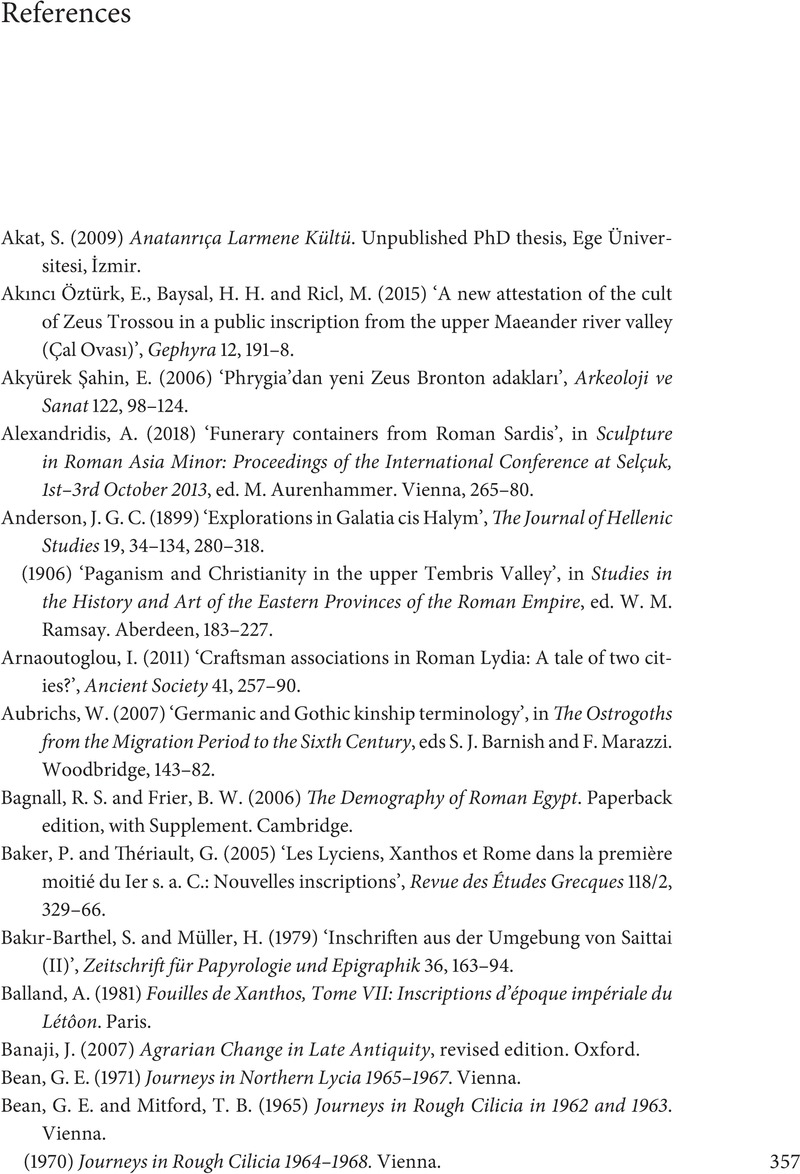Book contents
- The Lives of Ancient Villages
- Greek Culture in the Roman World
- The Lives of Ancient Villages
- Copyright page
- Contents
- Figures
- Tables
- Preface
- Abbreviations
- Maps
- 1 Hieradoumia
- 2 Commemorative Cultures
- 3 Demography
- 4 Kinship Terminology
- 5 Household Forms
- 6 The Circulation of Children
- 7 Beyond the Family
- 8 Rural Sanctuaries
- 9 Village Society
- 10 City, Village, Kin-Group
- References
- Index
- References
References
Published online by Cambridge University Press: 28 October 2022
- The Lives of Ancient Villages
- Greek Culture in the Roman World
- The Lives of Ancient Villages
- Copyright page
- Contents
- Figures
- Tables
- Preface
- Abbreviations
- Maps
- 1 Hieradoumia
- 2 Commemorative Cultures
- 3 Demography
- 4 Kinship Terminology
- 5 Household Forms
- 6 The Circulation of Children
- 7 Beyond the Family
- 8 Rural Sanctuaries
- 9 Village Society
- 10 City, Village, Kin-Group
- References
- Index
- References
Summary

- Type
- Chapter
- Information
- The Lives of Ancient VillagesRural Society in Roman Anatolia, pp. 357 - 377Publisher: Cambridge University PressPrint publication year: 2022



